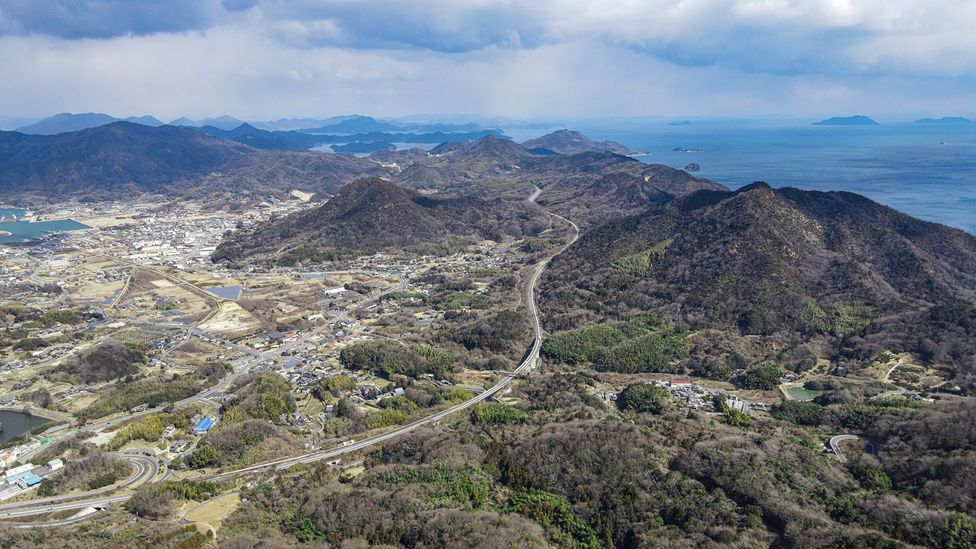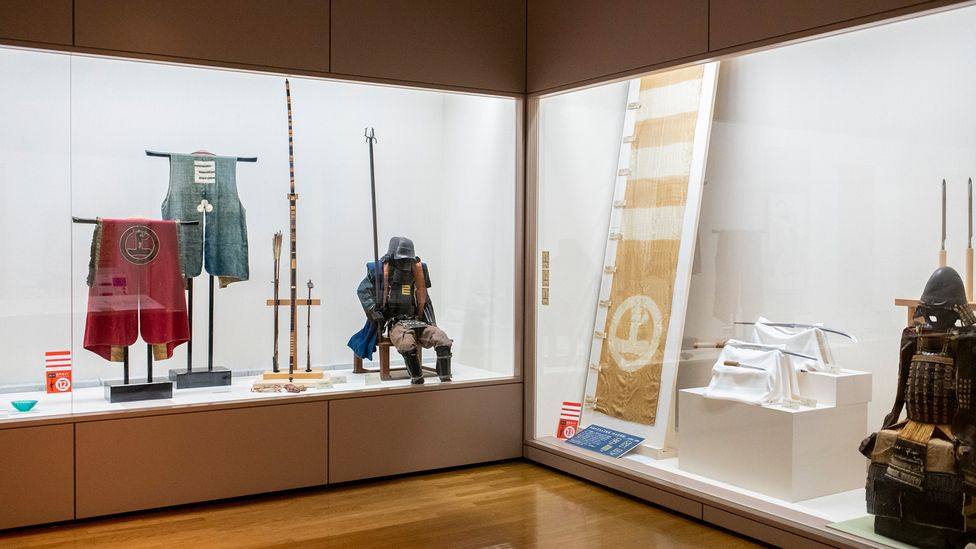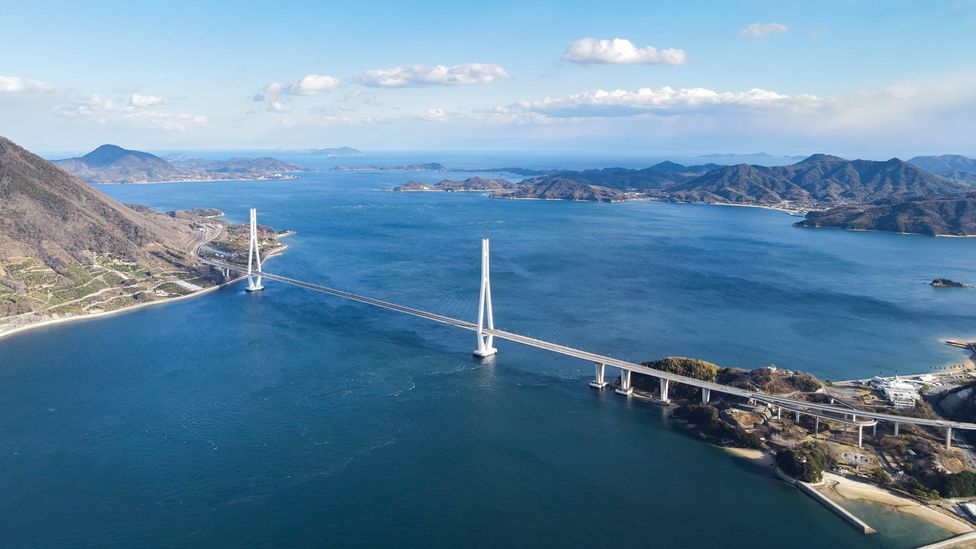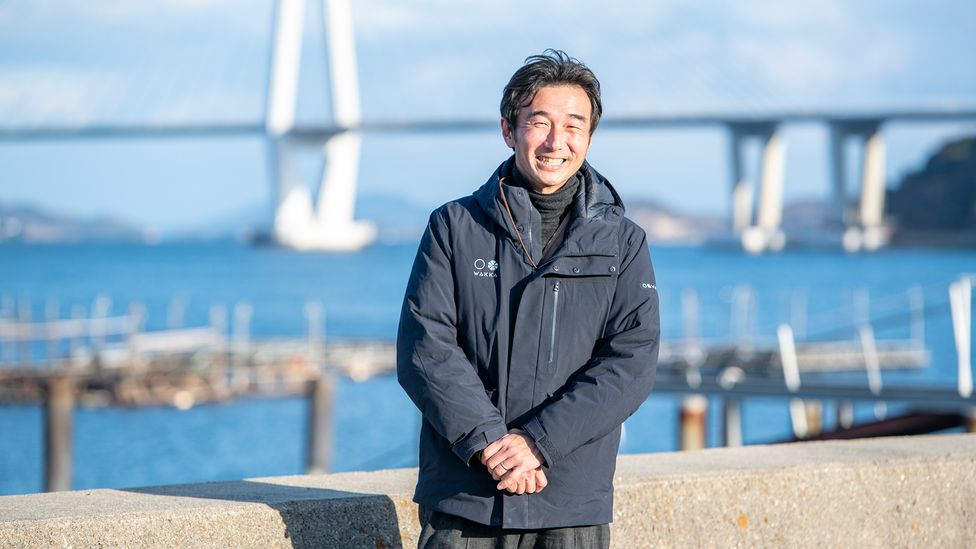Speeding along at 65m above sea level with an exhilarating view of islands in all directions and cargo ships in the churning waters below, I felt like I was parasailing. In fact, I was driving on the world's longest suspension structure, the Kurushima Kaikyo Bridge.
More than 4km in length, the bridge is one of eight long-span bridges on the 60km Nishi-Seto Expressway, known as the Shimanami Kaido, which means Island Wave Sea Road. The only route through the Geiyo Archipelago – a group of mountainous islands clustered at the heart of Japan's main waterway, the Seto Inland Sea – the expressway connects the islands to Onomichi City on Honshu Island in the north and Imabari City on Shikoku Island in the south.
Until the Shimanami Kaido was completed in 1999, the Geiyo Islands were a remote region, accessible only by boat. Around the islands are the most treacherous straits in the country. The Seto Inland Sea is where the Pacific Ocean flows through Japan; shifts in the tide create complicated underwater currents and fast whirlpools due to the islands' topography.

The Shimanami Kaido is the only route through the Geiyo Archipelago (Credit: Tom Miyagawa Coulton)
Today, the Shimanami Kaido stops along busy fishing ports, valleys terraced with farming villages and lemon and mikan tangerine orchards – and even culinary gems like the sushi restaurant Akakichi, which the Michelin Guide highlights as one of the most remote stars in its constellation of restaurants.
The route is also a journey into Japan's little-known seafaring past. From the 9th Century to the end of the 16th Century, the Geiyo Islands were home to pirates (kaizoku). These were seafaring clans who, by virtue of their skill at navigating dangerous waters, dominated the sea lanes of the Seto Inland Sea – and terrorised the coasts of East Asia, raiding, trading and fighting battles.
In recent years, a new appreciation of the pirates has been popularised in Japan, in part thanks to historian and television presenter Junko Yamada. Her book Kaizoku Ga Tsukutta Nihonshi (Japan's History Made by Pirates), published in 2017, describes the pirates as "heroes of the sea" because of the important part they played in major turning points of the country's island-nation history.
"The most recorded information we have is about the Murakami Kaizoku," said Ken Tanaka, curator at the Murakami Kaizoku Museum on Oshima Island, an archaeologist by training and one of Japan's foremost experts on the pirates. "They were the largest group of pirates, three branches of the Murakami family who emerged sometime in the 14th Century."
This was Japan's Muromachi era (1336-1573), when the former political order of central control under the shogun, Japan's military leader, had broken down. From 1467-1615, samurai warlords across the country divided Japan into independent fiefdoms.
"Together with the fishermen they recruited from the islands, [the Murakami Kaizoku] effectively ruled the Seto Inland Sea as their maritime fiefdom," said Tanaka. "While many of the pirates raided ships and pillaged villages, the Murakami were different. They were sea lords and collected tolls from ships traveling across the Seto Inland Sea and also fees to ensure safe passage by providing pilotage and security by acting as escorts. They did fight sea battles, but as mercenaries and to protect their territory."
While territorial battles also were taking place on Japan's mainland islands, the Murakami, Tanaka added "played a key role during the era by creating order on the Seto Inland Sea, thus facilitating trade, diplomacy and cultural exchanges".
It was only once the Tokugawa Shogunate disbanded the Murakami, after reunifying Japan in 1615, that it was able to famously close Japan's sea borders and implement its policy of sakoku (national seclusion). That policy endured until 1853, when Commodore Perry of the US Navy entered Tokyo Bay with his fleet of "Black Ships" and forced the country to again engage with the world.

The Murakami Kaizoku Museum has many artifacts from the Murakami pirates on display (Credit: Tom Miyagawa Coulton)
Today, the Murakami Kaizoku Museum is also a visitor centre for the "Policemen Pirates of the Setonaikai Sea", the thematic title of a Japan Heritage programme that traces 42 heritage sites across the islands related to the Murakami and their time. According to Tanaka, it is the most representative example of Japan's seafaring history in the Japan Heritage programme, which recognises cultural properties that tell narratives of the country's past.
As I found over the next two days of driving the Shimanami Kaido as a pathway to exploring a number of the sites via the islands' backroads, the Geiyo Islands are a microcosm of an extraordinary age. In addition to ruins of Murakami forts – one located on top of a mountain, a lookout tower from which the Murakami surveyed the sea lanes – I visited the largest collection of historical samurai armoury in Japan at Oyamazumi Shrine, which is dedicated to the Shinto gods who protect sailors and warriors, and a Chinese-influenced pagoda at Kojoji Temple, considered one of the finest examples of Muromachi architecture.
You may also be interested in:
• A paradise with too many palm trees
• The 333 islands opening to the world
• Moyenne Island: The world's smallest national park
Despite the political fragmentation of the Murakami era, it was a time of commercial and cultural vitality. Japan's fast-growing economy was propelled by maritime trade through the Seto Inland Sea, which included trade with Ming dynasty China and with new arrivals – Dutch traders, Portuguese explorers and Spanish missionaries – who introduced new art forms, guns and Christianity to Japan.
It later took 20th-Century bridge technology to achieve what the pirates once did through their boats and seafaring skill: weave the Geiyo Archipelago together, but this time, through steel, concrete, and high-tension wire. I joined other motorists and cyclists who had stopped at Tatara Shimanami Park Roadside Station to admire Tatara Bridge, the world's longest cable-stayed bridge when it was built (it now ranks eighth). Its slim towers and delicate cable fans – one set narrower than the other – gave the impression of a ghostly reflection of a mighty two-masted schooner.

The Tatara Bridge connects the islands the way boats and seafare once did (Credit: Tom Miyagawa Coulton)
Nearly every aspect of the bridges' construction were world firsts, said Toshio Kutsukake, director of the Expressway Division of Japan's Ministry of Land, Infrastructure, Transport and Tourism. Chief among these was the development of concrete and steel composite materials. "Tricky materials to work with," he said, "because they affect the strength of the bridge." But they were critical to achieving the long bridge spans while minimising the abutments to protect the environment. The Geiyo Islands are located in the Setonaikai National Park, Japan's first national park created in 1934, and there was a need to make the bridges blend into the seascape.
As I travelled the Shimanami Kaido, it was not at all congested, and with interchanges on each island, the route seemed made for exploring.
In its way, it was. Unlike two other roadways built as commercial routes across the Seto Inland Sea, the Shimanami Kaido was built to be a road for daily use, said Kutsukake. Construction began in 1975 after almost a century of lobbying by the islanders for a convenient and safer way to get to shops, schools and hospitals. In 1955, a tragic ferry accident resulted in the loss of hundreds of lives, creating additional pressure for the route.
There are separate dedicated lanes for pedestrians, bicycles and mopeds. In one of the anchorage towers of the Kurushima Kaikyo Bridge, there is even a lift that descends to tiny Uma Island (population 13).
Cyclists were the first to discover the Shimanami Kaido, making the challenging ramps up to the bridges, fast straightaways across them and winding roads in between them into one of the world's top cycling destinations. In more recent years, a growing number of new residents, attracted to the islands' slow way of life combined with the convenience of the road, have been working to make the islands themselves the destination.
Among them is Arashi Murakami, who in 2020 opened Wakka, a boutique hotel conveniently located midway along the route on Omishima Island, where I stopped for the night. Over a delicious fish stew, I learned that Murakami is a descendant of the pirates and a modern-day "privateer" – what we call an entrepreneur nowadays.

Arashi Murakami, a descendant of the Murakami pirates, now runs a boutique hotel on Omishima Island (Credit: Tom Miyagawa Coulton)
Originally from Tokyo, his grandfather was one of the diaspora of Murakami who spread throughout Japan over the centuries and often told him stories about the pirates. Arashi told me that he first came to the islands as a cyclist and later moved his family to the island because, he said, "I am proud of my heritage and wanted to provide the kind of amenities I wished were available when I travelled the road." In addition to the hotel and a cafe, he has added a water taxi service to offshore islands and arranges fishing excursions with local fishermen to encourage more tourists to visit the islands.
Ryu Morimoto, a founding member of Omishima Minna no Winery, also located on Omishima Island, returned to the islands after living in the UK for 20 years. She recalls how prior to the construction of the Shimanami Kaido, locals dreamed of an easily accessible bridge to connect the islands. She never expected it to become a reality. Now that it has, "life is much more convenient," she said.
"Each island has its own unique characteristics," she said. But, she continued, they share a history rooted in their seafaring past.
"The legacy of the Murakami pirates connects us."
---
Join more than three million BBC Travel fans by liking us on Facebook, or follow us on Twitter and Instagram.
If you liked this story, sign up for the weekly bbc.com features newsletter called "The Essential List". A handpicked selection of stories from BBC Future, Culture, Worklife and Travel, delivered to your inbox every Friday.
March 10, 2022 at 04:19AM
https://www.bbc.com/travel/article/20220309-japans-little-known-seafaring-past
Japan's little-known seafaring past - BBC.com
https://news.google.com/search?q=little&hl=en-US&gl=US&ceid=US:en

No comments:
Post a Comment